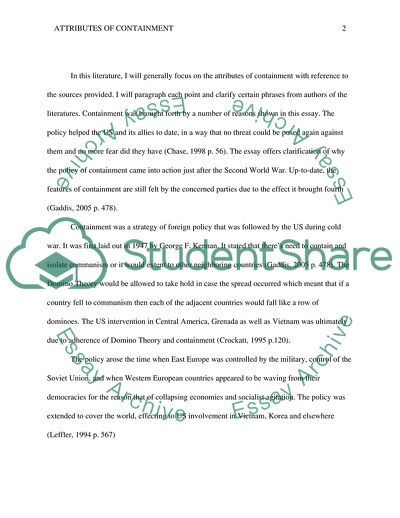Cite this document
(Main Attributes of Containment Case Study Example | Topics and Well Written Essays - 3000 words, n.d.)
Main Attributes of Containment Case Study Example | Topics and Well Written Essays - 3000 words. https://studentshare.org/military/1845711-what-are-the-main-attributes-of-containment
Main Attributes of Containment Case Study Example | Topics and Well Written Essays - 3000 words. https://studentshare.org/military/1845711-what-are-the-main-attributes-of-containment
(Main Attributes of Containment Case Study Example | Topics and Well Written Essays - 3000 Words)
Main Attributes of Containment Case Study Example | Topics and Well Written Essays - 3000 Words. https://studentshare.org/military/1845711-what-are-the-main-attributes-of-containment.
Main Attributes of Containment Case Study Example | Topics and Well Written Essays - 3000 Words. https://studentshare.org/military/1845711-what-are-the-main-attributes-of-containment.
“Main Attributes of Containment Case Study Example | Topics and Well Written Essays - 3000 Words”. https://studentshare.org/military/1845711-what-are-the-main-attributes-of-containment.


